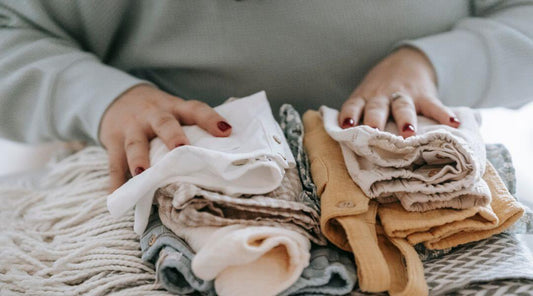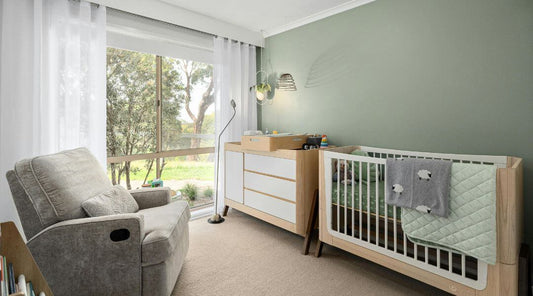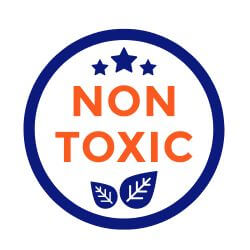Having a new baby is a joyful time, but there are a lot of decisions to make. Setting up a nursery can be demanding because it involves many decisions and tasks. You need to pick a safe, suitable furniture for your space. Choosing the ideal baby sleeper is essential. For example, a crib might seem perfect, but what if your space is small or you need something portable? The wrong choice might lead to problems or safety issues.
This guide will help you choose the best baby sleeper by covering key factors such as safety, comfort, and design. Read on to learn how to create a safe and comfy sleeping space for your baby.
Types of Baby Sleepers

A baby sleeper is where babies sleep. There are different types that offer different features and benefits.
- Cribs: These are built to last from newborns' first days to their toddler years. To keep your kid safe, they adhere to stringent safety procedures. They often have strong sidewalls with openings for visibility and airflow.
- Bassinets: For newborns, bassinets are ideal since they are lightweight and portable. They are easily accommodated in small areas. These are mainly used for the first four to six months. Their light design helps with feeding your baby at night.
- Bedside Sleepers: Bedside sleepers connect right next to your bed. They let you easily care for your baby at night. This is great for feeding and comforting them without standing up. Your baby sleeps safely in their area but is still close to you. These sleepers are perfect for a baby's early months. They give parents comfort knowing their baby is nearby at night.
Safety First
Safety is the top priority when choosing a baby sleeper. Here are key safety considerations:
Safety Standards
Ensure the baby sleeper meets current safety standards. In the United States, the Consumer Product Safety Commission (CPSC) requires certifications to ensure the product has passed rigorous safety tests.
Mattress Fit
The mattress in your baby's sleeper must be firm and well-fitted. It should precisely match the sleeper's size to avoid gaps. These gaps can be dangerous, as they pose a suffocation risk. A properly fitting mattress keeps the sleeping surface flat and safe. Always check the mattress size, firmness, and quality to keep your baby safe while sleeping.
Slat Spacing
The space between crib slats must be 2 3/8 inches at maximum. This tight spacing prevents a baby’s head from fitting through, avoiding possible injuries. For instance, if the gap is wider, a baby might get their head stuck, which is risky.
No Drop-Side Rails
Drop-side rail cribs are unsafe and should not be used. Their moving parts can create dangerous gaps. For instance, if the rail's hardware breaks, the rail might drop and create a space where a baby could get trapped. Always choose cribs with fixed sides for the highest safety, and ban drop-side rails to protect your baby.
Solid Headboards and Footboards
Pick sleepers with solid headboards and footboards. It’s best to avoid any decorative cutouts. These cutouts can trap a baby’s head or limbs, causing injury. For example, cribs with heart or star cutouts might look nice but unsafe. Always choose sleepers with a simple, solid design without cutouts for your child's safety.
Comfort Considerations
To make sure your baby sleeps comfortably, consider the following points.
Firm Mattress
The risk of SIDS, or sudden infant death syndrome, is reduced by a firm mattress. To test the firmness of the bed, apply pressure. It should not sag and must bounce back quickly.
Pick a mattress that keeps its shape over time, ensuring a safe and stable sleep surface. Always choose a mattress designed for your sleeper model. Look for mattresses made from high-density foam or innerspring coils. These materials are durable and maintain firmness. Consider the mattress cover is also waterproof.
Bedding
Use a tight-fitting sheet on the mattress. The crib should stay firmly in place to ensure it remains safe and comfortable. You should avoid blankets, pillows, or plush toys, which can cause suffocation. A bare mattress is safest for a baby's sleep. Instead of a blanket, use a sleep sack. This keeps the baby warm without the risk of suffocation. Choose sleep sacks made from breathable materials like cotton to avoid overheating.
Verify that every piece of bedding is hypoallergenic to protect your child from irritants and allergies. The bedding should also be simple to clean. Frequent washing keeps the sleep environment hygienic.
Design and Portability
The design of the baby sleeper should fit your lifestyle and space. Consider these factors:
Size and Portability
If you have limited space, choose a bassinet or bedside sleeper. These options are compact and fit well in small rooms. Look for bassinets with wheels for even greater portability. Many models are adjustable to match the height of your bed.
Check the weight and size specifications when selecting a bassinet or bedside sleeper. Ensure it fits in your available space. Some models fold easily, so they are ideal for travel. Consider size and portability when choosing. This ensures the sleeper suits your lifestyle while keeping your baby safe and comfortable.
Adjustable Features
Look for sleepers with adjustable mattress heights. This feature is essential for your baby’s safety. As your baby grows, you can lower the mattress, preventing them from climbing out and reducing the risk of falls. Adjustable mattress heights are helpful for parents, too. When your baby is young, keeping the mattress higher makes lifting them in and out easier. As your baby starts to stand and move, lowering the mattress keeps them safe.
When selecting a sleeper, check how easy it is to adjust the height. Some models have multiple height settings, giving you more options. Make sure the adjustments are secure and stable to avoid accidents. For added convenience, choose a model with tool-free adjustments. This allows you to change the height quickly and easily. Ensure the sleeper meets all safety standards to protect your baby.
Longevity
Consider how long you plan to use the sleeper. Cribs offer longevity, as they can be used for several years. They are designed to last from newborn to toddler, often converting into beds. Bassinets and bedside sleepers are typically used for the first few months.
Most bedside sleepers become unsafe once your baby can roll over, sit up, or crawl, usually around three or four months old. This limited use should be considered when deciding how much to spend. Assess your needs and budget to choose the best option for your baby's sleeping arrangement.
Conclusion
Choosing the right baby sleeper involves safety, comfort, and design. This guide helps you select a sleeper that fits your home and meets your needs. A suitable sleeper offers a secure, cozy place for your baby to rest and grow. Make a wise choice to ensure your baby sleeps well and stays happy.
Check out our baby sleepers to find the best one for your baby. Pick a sleeper that keeps your baby safe and comfy. Shop now to set up a cozy and secure sleep space.








